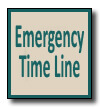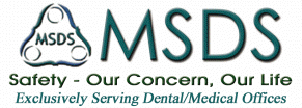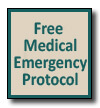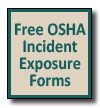Meeting Planners
From Conference Call to Curtain Call, MSDS is the Expert OSHA safety speaker to use for your Association, Study Club or State Meeting.
At MSDS, we want you to feel confident engaging MSDS to fulfill your presentation needs We would love the opportunity to share our expertise and encourage you to email us if you have questions. For a keynote speaker that will inspire audiences at your next conference, convention, retreat or gala, we realize that supporting meeting planners is key to achieving the goals of our future clients.
Whether you want a speaker to inspire your team to be safety motivated or to generate a complete office into a safety organizational transformation. MSDS is becoming one of the world’s finest speakers, consultants, experts, and trainers on OSHA safety for dental offices in the Nation.
Considering MSDS for an Engagement?
Some things to consider…….
1. Establish the date, time, and location of your event. These factors will play an important role in determining MSDS’ availability to you. Travel budget is extremely reasonable, however please request the amount to be sure.
2. Determine the type of presentation you want. MSDS can provide a humorous after-dinner or a energizing morning presentation.
3. MSDS’ presentations on OSHA Safety fall in the educational category.
How to Promote Your Keynote Speaker:
Tantalizing Titles
Get off to a strong start by assuring the session has a catchy title, advises Certified Speaking Professional (CSP) Chris Clarke-Epstein. “Start with a short, spiffy and clever title followed by a subtitle that explains the benefit of the session.”Successful brochures contain titles that capture attention but also immediately answer the question, “so what?” The subtitle should contain phrases such as “how to,” “10 tips,” “master five steps,” etc.Most importantly, make sure the session matches the description. “Hold speakers responsible for delivering what they promise,” says Clarke-Epstein.
Work Your Web Site and Create a Buzz with E-Mail
Familiarity breeds attendance, and your association’s Web site is a great tool to introduce your professional speaker to your potential audience. NSA member Jeff Blackman, JD, CSP, offers the following tips to help you make the most your association’s technologies.Post a detailed description of the session and the professional speaker on your site. Photos of the speaker in action are a good addition. You can also ask your keynote speaker to provide you with audio or video excerpts from a previous presentation to promote the program before the event. Be sure to provide your members with a link from your site to the keynote speaker’s Web site. “Members can learn more about the speaker or obtain additional content before and after the program.”When your event is over, Blackman also suggests posting audio or video excerpts from the session to reinforce the program’s key points and educate members who were unable to attend.If your association has an online book or tape store, feature your keynote speaker’s materials prior to the presentation. If you have a chat room or bulletin board, consider slating some time for your members to chat with your presenter. A professional speaker will use this opportunity to get to know your member’s concerns and questions and will customize his or her speech accordingly. Your members will appreciate the opportunity to learn and participate.E-mail is another easy and inexpensive way to promote your event and your keynote speaker. Use it to remind your members to register. Send them links to information and online registration forms. Generate a pre-program buzz by sending an e-mail questionnaire to your members. The responses should go to the keynote speaker, who can reveal the findings during the presentation. Add a personal touch by having the presenter send a “welcome” message to each of your attendees.
Word of Mouth
One of the best ways to promote your keynote speaker is to get other members talking about them, according to professional speaker and former Olympian Vincent Poscente. Find out where your keynote speaker is going to be presenting between the time when you hire them and when they will be presenting for your group. Invite members of your board of directors or event committee to see the presentation when your speaker is in their city.Consider having the keynote speaker address your chapters. Often, a professional speaker will negotiate fees when you book them for a number of presentations. Chapter newsletter editors often need additional material for their newsletters, so look into submitting an article on or from your presenter. Send them flyers to distribute at local meetings. Chapters are often the heart of an association, so don’t overlook their potential to spread the word about your presenter.
The Write Stuff
Chances are your presenter has written many articles on the subject at hand. You can also ask the keynote speaker to craft a customized article for your group or have a member of your staff conduct an interview. Not only do these articles make a great addition to your association’s publication; they might also be a good fit for the publications of other industry-related associations you are building relationships with. Provide links to the articles on your Web site as well. This builds the keynote speaker’s credibility and offers value-added information for your members.If your keynote speaker is published, use the professional speaker’s book to build excitement for the presentation. You can give attendees the book when they register. For added panache, have a book waiting to greet members in their hotel room along with a welcome letter from your president. “Books can even be personalized…depending on the size of the group,” says Blackman.
The Media: Get Ready
Gather everything you need to promote your keynote speaker to the media. Request that the speaker provide you with photos. They can be black & white or color, either head shots or action shots. Have the photo scanned and saved as a TIFF file. For Web publishing, 72 dots per inch will be fine. For print, save the image at 300 DPI.
The keynote speaker should also provide you with a short biography and a brief write-up on the program including key points, what the attendees will learn and why the he or she is qualified to speak on the topic.Prior to the event, send a short news release to the calendar editors at local daily newspapers and industry-related publications. Invite key editors to attend the event and make sure they get a copy of the program and other promotional materials. Contact local print and broadcast media to arrange interviews for your speaker and your key association leaders.
The Media: Get Set
Find out when your keynote speaker is going to arrive and when they are available for interviews. Keep a close eye on the news the week of your event. Is there a way to tie your speaker’s expertise into a current news peg? For instance, if your keynote speaker’s area of expertise is technology, perhaps they can talk about the latest hacking scandal. If you want local media to cover the speech, you must determine the news angle and pitch it hard. Think about what events would generate good photos or visuals for television cameras. Make follow-up calls to make sure the journalists have the information you sent them. Find out if the speaker has a publicist or PR firm and if so, partner with them on generating publicity. You want to get exposure for your association as well as the event, so give your speaker some short key messages to prepare them to discuss your group.
The Media: Go!
On the day of the event, messenger packages to key media. Write a media alert telling them who, what, when, where and, most importantly, why their audience needs to know about your event and your keynote speaker. Add some goodies such as the keynote speaker’s book, a video, a program and your association’s press kit and stuff it all in an attractive portfolio, preferably one with your association’s logo. Finally, be prepared for the media when they arrive on site. Have one of your staff or a trusted volunteer free to squire them around. Introduce them to the subjects they need for interviews. Have a good place in mind to conduct the interviews and take photos–try to get your association’s name or logo in the background.
The Party’s Over
Professional speakers know that a program is not a one-time event, but an ongoing process. They will often offer to send an e-mail to attendees with some value-added links to additional information. Your members should be able to benefit from the presentation long after it is over, and your association should continue to gain exposure as well. Look for anecdotes from your members about how they were touched or motivated by the session. How do they plan to implement what they have learned? Select the best photos and combine them with after-the-event news releases for ongoing exposure.
Above are tips from the National Speakers Association (NSA) on how to promote your keynote speaker:
Meeting Promotion And Publicity Checklist*
1. Review previous years’ promotional budgets
2. Determine objectives and scope of program
3. Determine audience(s): membership, potential exhibitors, an industry or trade, general public.
4. Develop theme and corresponding graphics. Considerations should include purposes of individual pieces: who will receive them, tone to be conveyed, how they will be produced, how many colors will be needed, what layout format is required at each stage (from rough to comprehensive), and how much is budgeted for them.
5. Develop a schedule for the campaign.
6. Set promotional budget based on characteristics of membership, features of the venue, time of year, strength of program, and costs of attendance.
7. Develop promotional materials according to tested criteria: short and forceful sentences, convincing explanation of benefits to attendees, clear emphasis on important elements of meeting, and easy means of registering.
8. Plan for all items needed for the campaign to carry theme forward, taking into account costs of special effects like embossing or die -cutting; quality, grade, weight, and finish of paper; number of ink colors used; time for production; and quantity required:
a. pre-meeting letters and announcements
b. preliminary programs
c. registration and housing forms
d. promotional pieces for both exhibitors and attendees
e. invitations
f. follow-up mailings
g. final agendas/program books
h. badge inserts
i. tickets
j. on-site registration materials
k. signage
l. newsletters
m. lists of registered attendees
9. Solicit a minimum of three competitive bids for all printing, checking samples of paper stock, samples of work for other meetings, references, and explanation of other services each firm can provide.
10. Select printer(s), taking into account whether need is for “quick” or commercial quality, demonstrated ability of a single printer to handle all needs, availability of necessary equipment for jobs, and ability to meet deadlines.
11. Agree with printer on schedule into which extra time is built, and monitor deadlines for rough layout, submission of copy, preliminary approval, completed layout, final approval of blueline, and delivery of job.
12. Promote at previous year’s meeting.
13. Release promotional pieces, press releases, and related materials in accordance with schedule, with news releases preceding membership promotional mailings.
14. Target local, national, international media as appropriate by type: trade papers, newspapers and periodicals of general interest, radio and television tailored to market.
15. Overall, control promotional costs through following measures:
a. Obtaining firm written bids for services
b. Providing clean, competently proofread copy to printers
c. Using standard paper sizes where at all possible
d. Using same paper stock for many pieces
e. Piggybacking print items using same color
f. Using standard PMS ink colors
g. Reusing graphics
h. Avoiding unnecessary special effects
i. Avoiding perforations in favor of dotted-line cutting guides
j. Coordinating printing times
k. Setting and enforcing firm policy on overtime
l. Minimizing number of copy changes* Courtesy of Professional Convention Management Association



